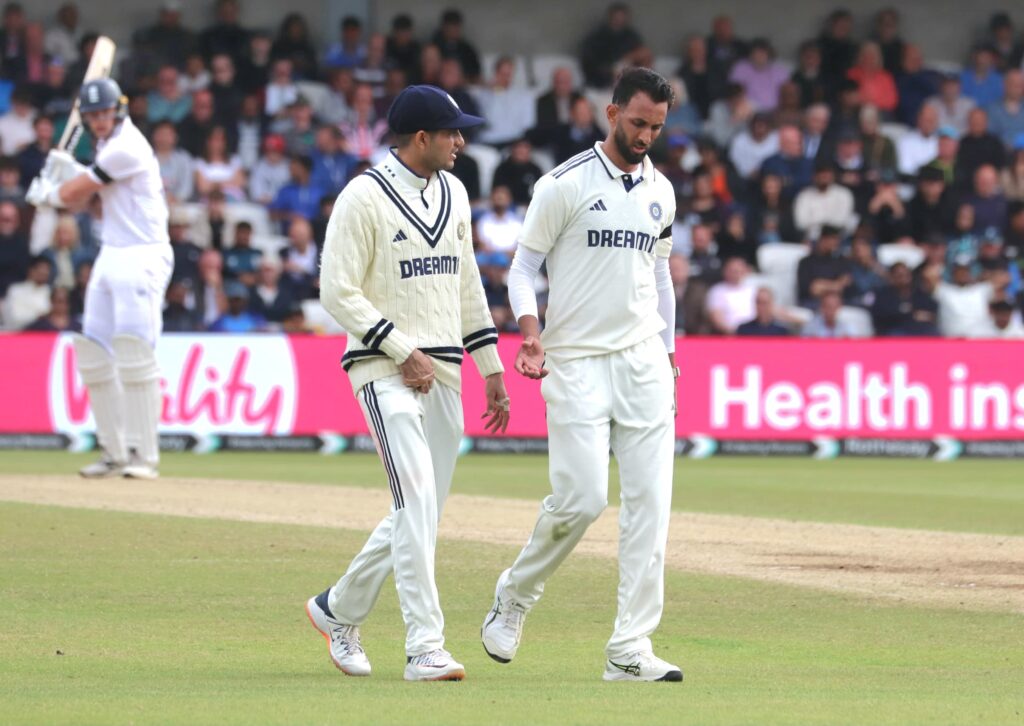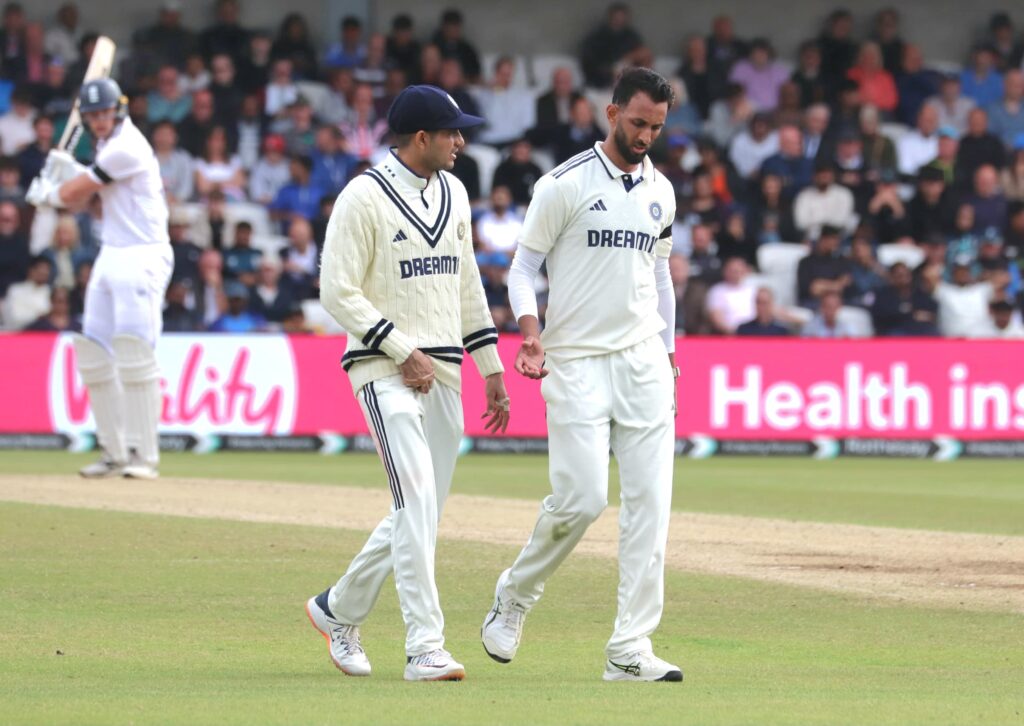
Overs – 35. Runs given – 220. Wickets taken – 5.
The above-mentioned figures were those of Prasidh Krishna in the Leeds Test against England. Those numbers narrate the story of his bowling. For one, he is a wicket-taker but he also hasn’t understood how to go about constructing an over in the longest format. In Prasidh’s defence, he has played just four Tests and is still on a learning curve.
To further gauge his problems, let’s pore through a few overs that he bowled in the second essay in Leeds. In the second over that Prasidh bowled, he ushered in a couple of excellent deliveries. From round the wicket, he swung the ball sharply into Ben Duckett and then it moved away off the deck to whistle past the outside edge. Unfortunately for Prasidh and India, the last ball of that over was too wide of off stump, and Duckett cashed in by thwacking one through mid-off.
Akin to clothes going round and round in a circular motion in a washing machine, Prasidh’s woes continued in a similar vein. In his next four overs, Prasidh beat the bat a few times, but that was juxtaposed with width or half-volleys. His figures after the first spell read: 35 runs in six overs. Even when Prasidh dismissed Ollie Pope and Zak Crawley with swing and seam, and also troubled Joe Root, he ended up bowling down-the-legside deliveries and offered width. And once again, unfortunately for Prasidh, all those offerings were dispatched to the boundary hoardings.
In a nutshell, those who build pressure by bowling dots succeed across formats. It is true that Prasidh has the wicket-taking ability as he extracts bounce from a slightly fuller length, alongside getting a hint of swing and seam. But he follows up a good delivery with a pressure-releaser, allowing the batter to find his rhythm and self-belief.
There could be a few other issues too with Prasidh. As Steve Harmison observed on ‘TalkSport’, “I noticed some inconsistencies in his action.” He was basically indicating that Prasidh did not have a repeatable action, which in turn could affect his ability to put the ball in the right areas over a period of time. The educated guess could be when Prasidh shifts to a round-the-wicket-angle while bowling to a left-hander, his action changes a bit from time to time.
In the first innings, it was also quite clear that it was coming out floaty. It gives us an inkling that Prasidh was struggling a touch to hit the seam on a consistent basis. In the second dig, he rectified it to some extent, which in turn ensured that he found more movement and bounce.
One has to reiterate the fact that Prasidh has played a mere four Tests. Even legends like Glenn McGrath and Curtly Ambrose averaged 43.68 and 35.05 after partaking in eight and six Tests respectively. Having said that, in the context of Prasidh being up against a slew of fearless batters who take advantage of every loose ball on offer, he needs to tighten up a few loose ends in his bowling. Otherwise, it could be an even more chastening experience in the upcoming games if picked in the playing XI.
For more exciting articles, follow RevSportz.




